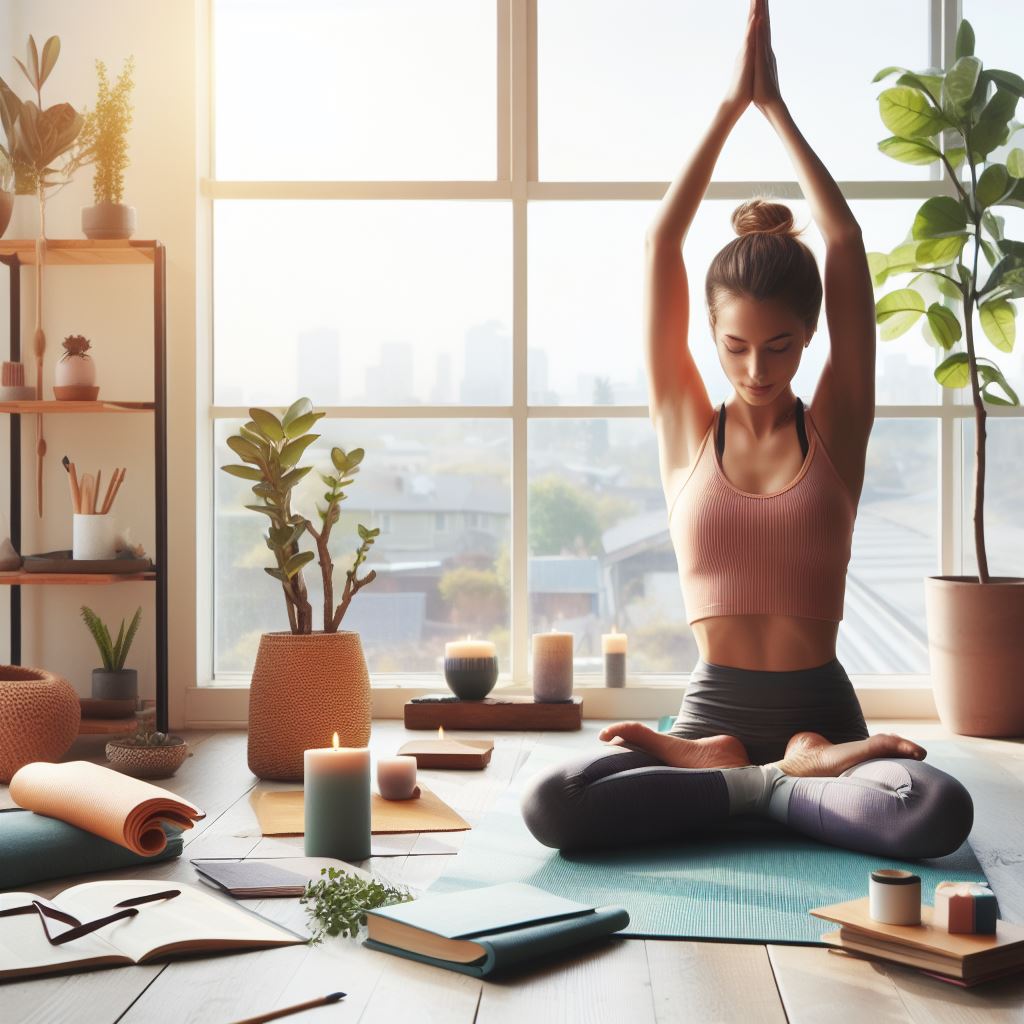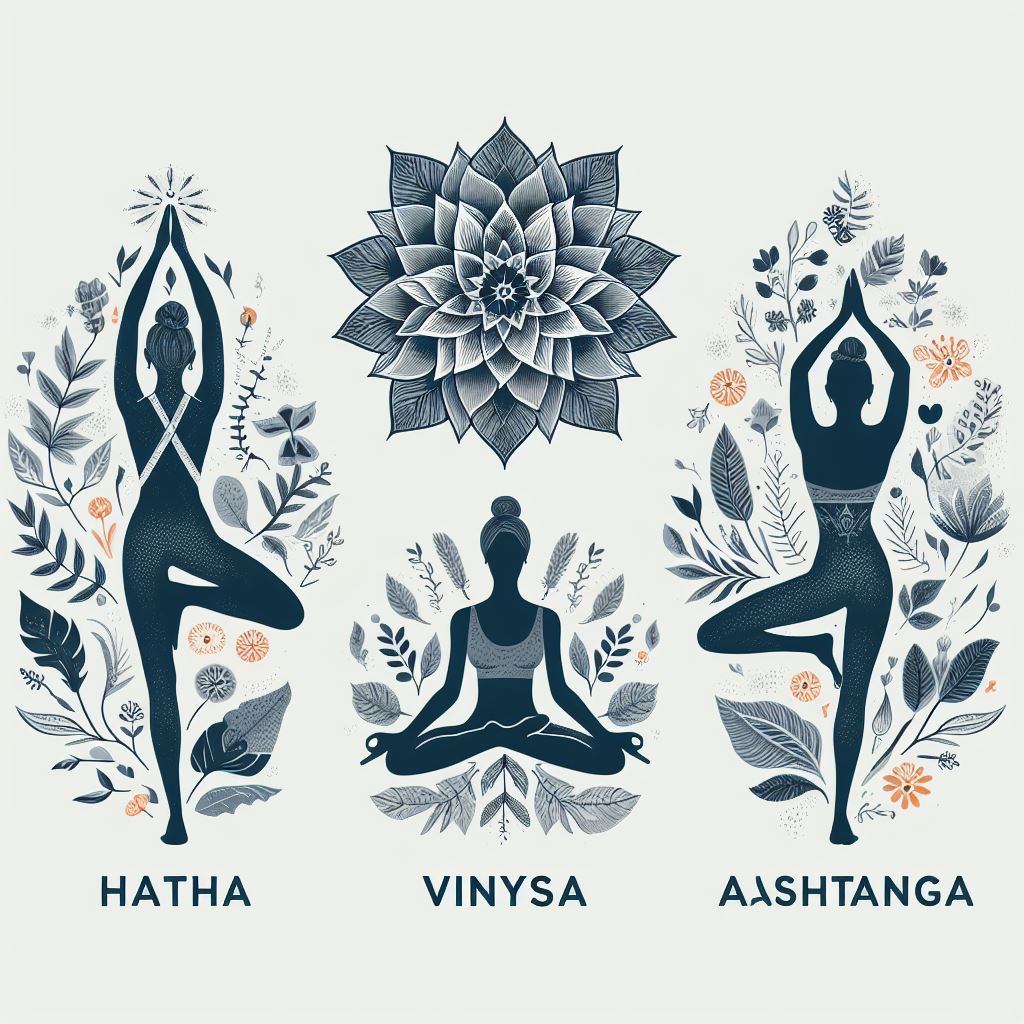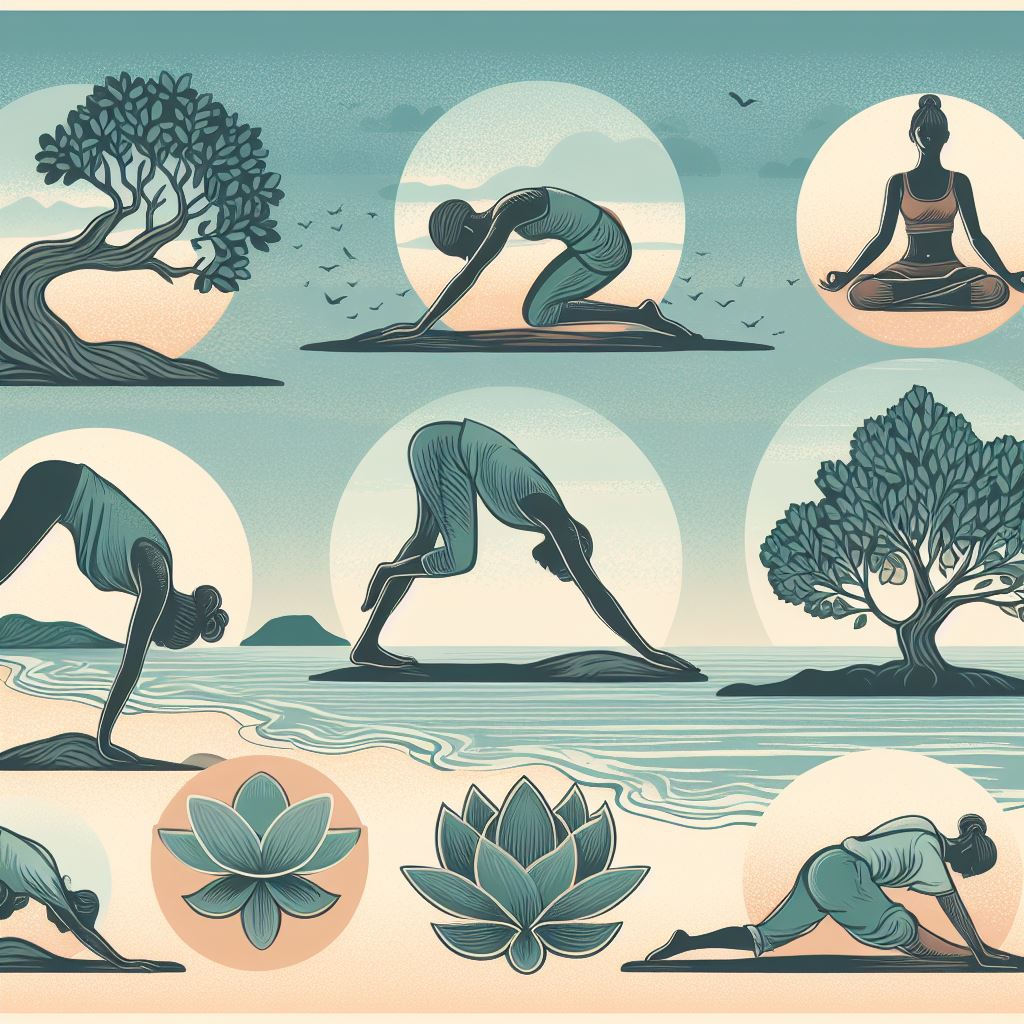
Introduction
Yoga, an ancient practice with modern relevance, offers a blend of physical, mental, and spiritual enrichment. As you prepare to embark on this transformative journey, remember, that your first class is a pivotal step. Here, we will guide you through five essential tips to ensure your initiation into yoga is as rewarding as it is enlightening.
Tip 1: Choose the Right Class
Embarking on your yoga journey begins with a pivotal decision: finding the right class. The world of yoga is as diverse as it is profound, offering a myriad of styles that cater to every preference and need. From the serene and gentle flow of Hatha, perfect for those seeking calm and balance, to the invigorating intensity of Bikram, where the heat envelops you in a challenging yet rejuvenating embrace, every style has its unique charm and benefits.
Understanding your own needs is crucial in this process. Ask yourself, are you seeking a physical challenge, or are you in pursuit of inner peace? Perhaps you’re looking for a harmonious blend of both. Reflect on your fitness level too. Are you a beginner looking to learn the basics in a nurturing environment, or are you an experienced practitioner eager to push your limits? Each class offers a different journey, and the right choice will align not just with your physical abilities but also with the aspirations of your heart.
The beauty of yoga lies in its inclusivity and adaptability. There’s a style for every age, every body type, and every level of fitness. Some classes focus more on the meditative and spiritual aspects, guiding you through a journey inward, while others are dynamic and physically demanding, perfect for those seeking to strengthen and tone their body.
Research is your gateway to making an informed choice. Dive into the vibrant world of yoga – read articles, watch videos, and, most importantly, engage with the community. Local yoga studios, online forums, and social media groups are treasure troves of information and firsthand experiences. Don’t hesitate to ask questions. What does a typical class look like? What can you expect from the instructor? How do others feel after the class?
Remember, the right class for you is the one where you feel welcomed and at ease, challenged yet comfortable, and where you leave feeling rejuvenated, both physically and spiritually. It’s a personal choice, one that resonates with your inner being. So, explore with an open heart, ask with a curious mind, and find your fit in this beautiful, transformative practice of yoga. Your perfect class is out there, waiting to be discovered, ready to be a part of your incredible journey toward wellness and self-discovery.
Tip 2: Equip Yourself Appropriately
When you step into the world of yoga, you’re embracing a practice that transcends just physical exercise. It’s a journey of connection between body, mind, and soul. While yoga’s beauty lies in its simplicity, having the right equipment can profoundly enhance this intimate experience. It’s not about fancy gear or trendy brands; it’s about choosing tools that support and deepen your practice.
The cornerstone of your yoga arsenal is undoubtedly a quality yoga mat. This is not just a piece of equipment; it’s your personal sanctuary. A good yoga mat acts as a foundation, a steady and supportive base for your exploration of various poses. It’s where you’ll stand, sit, and lay, experiencing every breath and movement. Comfort is key here. A mat that’s too thin might leave you uncomfortable on hard floors, while one that’s too thick can make it challenging to feel grounded and stable. Look for that perfect balance – a mat that cushions yet supports, providing stability for your standing poses and comfort for seated or lying ones.
Equally important is your choice of clothing. Yoga is about fluidity and movement, and your attire should reflect that. It’s not just about aesthetics; it’s about functionality. Choose clothing that allows you the freedom to move, stretch, and bend without restriction. But, it’s also essential that your clothing is form-fitting enough to ensure your instructor can observe your alignment and posture. This is crucial for your safety and progress. Clothes that are too loose can get in the way of poses and may not provide enough support where needed.
But remember, while it’s important to have the right gear, yoga is ultimately about your internal experience. These tools are just aids to help you delve deeper into your practice. They should enhance your connection to the practice, not distract from it. So, choose wisely, but also remember that the true essence of yoga lies within you, not in the material items you possess.
As you select your mat and attire, do so with intention and mindfulness. Each item is a companion on your journey, a silent supporter of your exploration and growth in yoga. Equip yourself appropriately, and you’ll find that these simple choices can significantly enrich your practice, making each session more comfortable, effective, and enjoyable.
Tip 3: Prepare Your Mind and Body
As you embark on the transformative journey of yoga, remember that it is a holistic practice, harmonizing the mind, body, and spirit. The preparation for your yoga class is not just about limbering up your body; it’s equally about cultivating an inner landscape of tranquility and openness. Yoga is a dance of movement and stillness, and your readiness to embrace both these aspects is essential.
Preparing your mind is the first step toward a fulfilling yoga experience. Approach your yoga practice with an open mind, a willingness to learn, and a heart free of judgments. Let go of any preconceived notions or expectations. Whether you’re a seasoned practitioner or a novice, each class is a new beginning, a unique opportunity to explore the depths of your being. Cultivate a sense of curiosity and allow yourself to be a student of your own body and mind. Remember, yoga is not a competition, neither with others nor with yourself. It’s a journey of self-discovery and personal growth.
A calm and centered spirit is your greatest ally in yoga. Before you step onto your mat, take a few moments to breathe deeply, to ground yourself in the present moment. This simple act of mindfulness can significantly alter your practice, allowing you to move with greater intention and awareness. It’s about creating a space where your mind can be at ease, free from the clutter of everyday thoughts and worries.
Physical readiness is also crucial. Yoga is an active practice that engages various muscles and joints. To prepare your body, consider doing some gentle stretching or a short walk to awaken your muscles. Pay attention to your body’s signals. If you feel any discomfort or stiffness, honor that and adjust your practice accordingly.
Nutrition plays a vital role in how you experience your yoga practice. Opt for a light meal or snack before your class to keep your energy levels balanced. Yoga on a full stomach can be uncomfortable, so it’s best to eat something light and nutritious an hour or two before your class. Hydration is equally important. Ensure you’re well-hydrated before the class begins, and consider bringing a water bottle to keep hydration levels up during the practice.
Preparing your mind and body for yoga is about creating a harmonious environment within yourself to fully embrace the practice. It’s a ritual of sorts, a way of honoring the sacred space that yoga offers. As you prepare, do so with intention and mindfulness, setting the tone for a practice that is not just physically rewarding but also mentally and spiritually enriching.
Tip 4: Understand Yoga Etiquette
Yoga is more than a physical practice; it’s a journey of mindfulness and respect, both for oneself and for the community of fellow practitioners. Understanding and adhering to yoga etiquette is not just about following rules; it’s about honoring the sacred space that yoga creates and contributing to a harmonious environment for everyone.
Arriving on time is a fundamental aspect of this respect. It speaks of your commitment not only to your own practice but also to the collective experience. When you arrive on time, you set a tone of dedication and mindfulness. It allows you to settle in, attune to the space, and prepare your mind and body without rushing. Late arrivals can disrupt the flow and energy of the class, so it’s always better to be a few minutes early.
Silencing your phone is a simple yet powerful act of mindfulness. It’s not just about preventing disturbances; it’s about signaling to yourself and others that for this duration, the focus is entirely on the present moment, on the practice of yoga. By turning off your phone, you’re carving out a sacred space, free from the incessant demands and distractions of everyday life.
Being mindful of the shared space is also crucial. Yoga studios are sanctuaries of peace and reflection. Move through the space with a sense of awareness and care. Place your mat thoughtfully, ensuring you’re not encroaching on someone else’s space. Be aware of your movements and the noise you make. This shared space is a collective refuge, and every action you take should respect and preserve its tranquility.
Your yoga mat is indeed your personal sanctuary, a small but significant space where you embark on a deeply personal journey. However, it’s also part of a larger tapestry, woven together with the mats of your fellow yogis. Respect for others’ space is paramount. Refrain from stepping on other people’s mats, and be conscious of how your movements and poses might affect those around you.
Engagement with your instructor and fellow yogis should be imbued with kindness and openness. Yoga is not just about individual growth; it’s also about building a compassionate and supportive community. Listen attentively, communicate respectfully, and be open to learning from others. Every person in the room, including the instructor, is a part of your journey, offering unique insights and energies.
Understanding and practicing yoga etiquette is a reflection of the deeper principles of yoga – respect, mindfulness, and harmony. It’s about creating a respectful and supportive environment, not just for yourself, but for everyone who shares the journey with you. As you step into the yoga studio, carry these principles with you, and let them guide your actions and interactions. In doing so, you contribute to a space that is not just conducive to physical practice but is also a haven for spiritual growth and communal harmony.
Tip 5: Listen to Your Body
At the heart of yoga lies a profound and beautiful truth: it is a journey of personal growth, not a field of competition. Embracing this philosophy means understanding and honoring the most crucial aspect of your practice – listening to your body. This self-awareness is not just a component of yoga; it is its essence.
As you move through each pose, your body speaks a language of sensations, whispers of comfort and alerts of strain. Attuning to these signals is a practice of mindfulness that goes beyond the mat. When a pose feels uncomfortable, it’s your body conversing with you, guiding you to find a balance between effort and ease. Acknowledging this discomfort isn’t a sign of weakness; it’s a mark of wisdom and self-respect.
Modifying a pose is an act of kindness to yourself. It’s a recognition that everybody is unique, and what works for one may not work for another. Use props like blocks or straps, adjust the angle, or shift into a restful pose like Child’s Pose. These modifications are not deviations from the practice; they are integral to it, allowing you to honor your body’s needs and limitations.
Yoga teaches us that progress is not about pushing through pain or mirroring someone else’s posture perfectly. It’s about finding your own rhythm, your own path of growth. Some days, your body might feel strong and flexible, gliding through poses with ease. On other days, it might ask for gentleness and rest. Listening to these varying needs is a practice of self-awareness and respect.
Respecting your body’s limits is not just a physical practice; it’s an emotional and spiritual one as well. It’s about cultivating a relationship with your body that’s based on compassion rather than control. This respect leads to a deeper connection with yourself, fostering a sense of harmony and acceptance.
In the beautiful dance of yoga, every movement, every breath, and every moment of stillness is an opportunity to listen deeply to your body. It’s an invitation to engage in a dialogue with yourself, exploring the depths of your being. By listening to your body, you’re not just practicing yoga; you’re living it. This self-awareness and respect bring a sense of peace and contentment that extends far beyond the yoga mat, enriching every aspect of your life.
Conclusion
As you step onto the mat for the first time, embrace the journey with an open heart and mind. Remember, yoga is not just a physical practice but a path to self-discovery and wellness. Welcome to the world of yoga – a journey of endless exploration and growth.
FAQs
- What should I expect in my first yoga class? Expect a welcoming environment, basic poses, and an emphasis on learning proper form.
- How early should I arrive for my first class? Arriving 10-15 minutes early can help you settle in and speak with the instructor about any concerns.
- Is it normal to feel overwhelmed in the first class? Yes, it’s completely normal. Take your time and remember that yoga is a personal journey.
- What if I can’t perform certain poses? It’s okay! Yoga is adaptable. Feel free to modify poses or take breaks as needed.
- How often should I practice yoga as a beginner? Start with 1-2 times a week and gradually increase as you feel comfortable.

